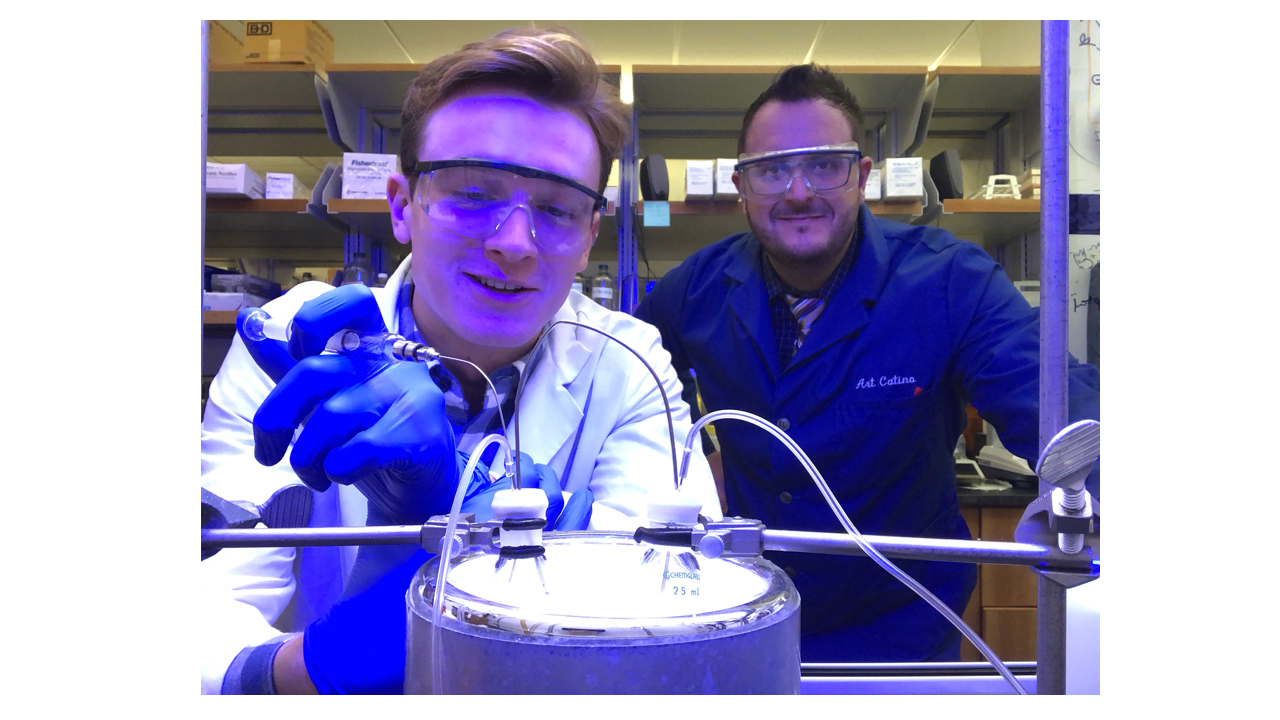Campus Chemists Prepare Sought-after Molecules

If you have a Samsung Galaxy or iPhone X then you are probably already familiar with OLEDs. OLED, short for
“These are definitely not molecules that you find in nature,” explained Dr. Arthur Catino, assistant professor of chemistry and co-director of the environmental science program. “These are complex molecules that require a skilled organic chemist to assemble from simple organic building blocks such as those found in petroleum.”
One such organic molecule that is used in OLEDs is
“Any student who has taken organic chemistry can draw
Carbon can have a maximum of four bonds. Attaching small atoms or groups to a single carbon atom is relatively simple. Large groups, on the other hand, begin to crowd into each other and even block subsequent groups from bonding to the carbon atom. So it is with TPM, especially when the phenyl groups contain bonds to other atoms or groups.
This long-standing problem led Dr. Catino and his research group to devise a method that overcomes this crowding effect. The team’s findings were reported online last week in Tetrahedron Letters and will appear in print later this month. DOI: https://doi.org/10.1016/j.tetlet.2018.09.056
“Ours is the first general method to prepare
Dr. Catino admits that he was initially wary of the project. It was a graduate student in his laboratory, Paul Griffin'16, G'18
“We made several new
To get the proof they needed, Dr. Catino enlisted the help of Dr. Kristopher Kolonko, director of the Stewart’s Advanced Instrumentation and Technology (SAInT) Center at Siena College. Using high-field nuclear magnetic resonance spectroscopy and high-resolution mass spectrometry, they were able to confirm unambiguously the chemical structures of each of their molecules.
“This is a really exciting time to be making TPMs,” said Dr. Catino. “Not only are these molecules found in OLEDs
Organic solar cells work essentially the same way as conventional solar cells, except the silicon has been replaced with a carbon-based molecule that converts sunlight to an electrical current. The advantage of organic solar cells is that they can be spray-coated or printed onto a surface such as glass, plastic, paper, or even fabric.
“This technology is already here; we just need to increase the efficiency to catch up to silicon,” explained Dr. Catino. “Further innovation hinges on the development of new synthetic methods such as ours that allow rapid access to new molecular materials.”
Dr. Catino and his research group are continuing their work and hope to prepare the first chiral






